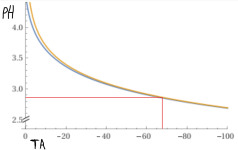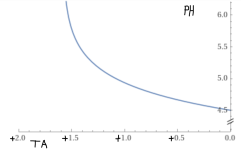Hey everyone, my name is Doug from Pensacola, FL. I am a newer pool owner at just 14 months of ownership. I am dealing with some chemical quandaries in my pool as I completely bungled my pool water from a complete lack of any research whatsoever into balancing pool chemicals. I have since read the Pool School articles and downloaded the PoolMath app but still have some issues that I cannot find answers for. Below are my levels as of today (sunny, 90 degrees, 80% humidity) -
FC - 23.5
TA - 0
Ph - level too low to measure but presumably low 6's
CYA - Too high to measure but I am estimating around 210 which is why FC is high based on recommendations from PoolMath
After 14 months of reckless puck and shock usage and never measuring levels we found out our CYA was very high from Leslie's since we had some light algae appearing but with very clear water. I realized out after just a few visits that major pool chains are about as helpful as a screen door on a submarine so after some research I was lucky enough to find TFP. I purchased the Taylor K-2006C kit and began testing my levels and adjusting in accordance with the PoolMath app (I now believe my CYA may have been 400+ prior to draining and refilling more than half our pool over the course of 2 weeks). My initial results were the same as above except my FC was .5 and PoolMath said to add roughly 512 ounces of liquid chlorine, which I did, and that brought my level up to 23.5 which was my second reading, the first was 18. I took the first reading after an hour with the pump on high so I am confused why the FC jumped up 5.5 ppm in 24 hours, perhaps operator error with the testing kit? My second issue is that PoolMath suggested I add 18 lbs of baking soda as my TA level measured at 0. I first added 8.5 lbs and tested and then 5.5 more lbs and tested but both times my reading was 0. The water sample never turned green when adding the reagent and went straight to red.
I know the first course of action should be to drain more of my pool to get the CYA to optimal levels but I am perplexed as to why my TA is still at zero, what my true CYA level is and if there is a way to find out and should I address Ph before addressing TA?
Thank you for taking the time to read this and hopefully it is cohesive enough but for anyone willing to respond please let me know if there are any questions about my situation so I can hopefully get some clarity.
Thank you,
Doug
FC - 23.5
TA - 0
Ph - level too low to measure but presumably low 6's
CYA - Too high to measure but I am estimating around 210 which is why FC is high based on recommendations from PoolMath
After 14 months of reckless puck and shock usage and never measuring levels we found out our CYA was very high from Leslie's since we had some light algae appearing but with very clear water. I realized out after just a few visits that major pool chains are about as helpful as a screen door on a submarine so after some research I was lucky enough to find TFP. I purchased the Taylor K-2006C kit and began testing my levels and adjusting in accordance with the PoolMath app (I now believe my CYA may have been 400+ prior to draining and refilling more than half our pool over the course of 2 weeks). My initial results were the same as above except my FC was .5 and PoolMath said to add roughly 512 ounces of liquid chlorine, which I did, and that brought my level up to 23.5 which was my second reading, the first was 18. I took the first reading after an hour with the pump on high so I am confused why the FC jumped up 5.5 ppm in 24 hours, perhaps operator error with the testing kit? My second issue is that PoolMath suggested I add 18 lbs of baking soda as my TA level measured at 0. I first added 8.5 lbs and tested and then 5.5 more lbs and tested but both times my reading was 0. The water sample never turned green when adding the reagent and went straight to red.
I know the first course of action should be to drain more of my pool to get the CYA to optimal levels but I am perplexed as to why my TA is still at zero, what my true CYA level is and if there is a way to find out and should I address Ph before addressing TA?
Thank you for taking the time to read this and hopefully it is cohesive enough but for anyone willing to respond please let me know if there are any questions about my situation so I can hopefully get some clarity.
Thank you,
Doug




